1. Reich JW, Zautra A, Hall JS. Handbook of adult resilience. New York: Guilford Press;2010. p. 213–237.
2. Park E, Choi SJ. Prevalence of suicidal ideation and related risk factors among Korean adults. Journal of Korean Academy of Psychiatric and Mental Health Nursing. 2013; 22(2):88–96. https://doi.org/10.12934/jkpmhn.2013.22.2.88.

3. Chang SJ, Koh SB, Kang MG, Cha BS, Park JK, Hyun SJ, et al. Epidemiology of psychosocial distress in Korean employees. Journal of Preventive Medicine and Public Health. 2005; 38(1):25–37.
4. Chang SJ, Koh SB, Kang D, Woo J, Jo J, Chae J, et al. Development of manual and support programs for job stress high risk groups according to job characteristics. Incheon: The Occupational Safety and Health Research Institute;2009. Nov. Report No.: 2009-118-1268.
5. Cox T, Griffiths A, Rial-González E. Research on work-related stress. Luxembourg: European Agency for Safety and Health at Work;2000. Jun. Report No.: TE-28-00-882-EN-C.
6. Selye H. Stress in health and disease. Boston (MA): Butterworths;2013. p. 14–34.
7. McEwen BS. Physiology and neurobiology of stress and adaptation: Central role of the brain. Physiological Reviews. 2007; 87(3):873–904. https://doi.org/10.1152/physrev.00041.2006.

8. Lazarus RS. Stress and emotion: A new synthesis. New York: Springer;2006. p. 101–128.
9. Kim ML, Song KY. Changes of the level of physical self-efficacy, depression and stress of middle-aged men according to the stage of exercise change. The Journal of the Korea Contents Association. 2009; 9(9):393–402. https://doi.org/10.5392/JKCA.2009.9.9.393.

10. Yun YJ, Lee JH. Effects of exercise participation on the level of stress and coping behavior among children. Korean Journal of Sport Psychology. 2008; 19(2):81–95.
11. Gu JG. The effects of clinical art therapy on change into concentration of salivary cortisol. Journal of the Korean Academy of Clinical Art Therapy. 2010; 5(1):26–32.
12. Park SK, Kim EH, Kwon YC. Effect of the yoga program on health related fitness, depression, stress related factors and immune cell in middle-aged women. Journal of Sport and Leisure Studies. 2008; 33(2):999–1010.

13. Heo DG. Effect of meditation program on stress response reduction of the elderly. The Journal of the Korea Contents Association. 2009; 9(3):232–240. https://doi.org/10.5392/JKCA.2009.9.3.232.

14. Bahk WM, Lee KU. Pharmacotherapy of posttraumatic stress disorder. Korean Journal of Psychopharmacology. 2004; 15(1):22–29.
15. Rhee JH. Is Korea burning out? - The autogenic training as the proper solution. The Korean Journal of Stress Research. 2006; 14(2):139–159.
16. Crocker PR, Grozelle C. Reducing induced state anxiety: Effects of acute aerobic exercise and autogenic relaxation. The Journal of Sports Medicine and Physical Fitness. 1991; 31(2):277–282.
17. Sakakibara M, Hayano J, Oikawa LO, Katsamanis M, Lehrer P. Heart rate variability biofeedback improves cardiorespiratory resting function during sleep. Applied Psychophysiology and Biofeedback. 2013; 38(4):265–271. https://doi.org/10.1007/s10484-013-9232-7.

18. Kanji N, White A, Ernst E. Autogenic training to reduce anxiety in nursing students: Randomized controlled trial. Journal of Advanced Nursing. 2006; 53(6):729–735. https://doi.org/10.1111/j.1365-2648.2006.03779.x.

19. Solberg EE, Ingjer F, Holen A, Sundgot-Borgen J, Nilsson S, Holme I. Stress reactivity to and recovery from a standardised exercise bout: A study of 31 runners practising relaxation techniques. British Journal of Sports Medicine. 2000; 34(4):268–272. https://doi.org/10.1136/bjsm.34.4.268.

20. Asbury EA, Kanji N, Ernst E, Barbir M, Collins P. Autogenic training to manage symptomology in women with chest pain and normal coronary arteries. Menopause. 2009; 16(1):60–65. https://doi.org/10.1097/gme.0b013e318184762e.

21. Golding K, Kneebone I, Fife-Schaw C. Self-help relaxation for post-stroke anxiety: A randomised, controlled pilot study. Clinical Rehabilitation. 2016; 30(2):174–180. https://doi.org/10.1177/0269215515575746.

22. Kanji N, White AR, Ernst E. Autogenic training reduces anxiety after coronary angioplasty: A randomized clinical trial. American Heart Journal. 2004; 147(3):508. https://doi.org/10.1016/j.ahj.2003.10.011.

23. Stetter F, Kupper S. Autogenic training: A meta-analysis of clinical outcome studies. Applied Psychophysiology and Biofeedback. 2002; 27(1):45–98. https://doi.org/10.1023/A:1014576505223.
24. Seo E, Hong E, Choi J, Kim Y, Brandt C, Im S. Effectiveness of autogenic training on headache: A systematic review. Complementary Therapies in Medicine. 2018; 39:62–67. https://doi.org/10.1016/j.ctim.2018.05.005.

25. Everly GS, Lating JM. A clinical guide to the treatment of human stress response. 2nd ed. New York: Kluwer Academic/ Plenum;2002. p. 131.
26. Higgins JPT, Green S. Cochrane handbook for systematic reviews of interventions. Chichester: Wiley-Blackwell;2008. p. 266–278.
27. Moher D, Liberati A, Tetzlaff J, Altman DG. PRISMA Group. Preferred reporting items for systematic reviews and meta-analyses: The PRISMA statement. Journal of Clinical Epidemiology. 2009; 62(10):1006–1012. https://doi.org/10.1016/j.jclinepi.2009.06.005.
28. Luthe W, Schultz JH. Autogenic therapy. New York: Grune & Stratton;1973. p. 164–168.
29. Charlesworth EA, Murphy S, Beutler LE. Stress management skill for nursing students. Journal of Clinical Psychology. 1981; 37(2):284–290. https://doi.org/10.1002/1097-4679(198104)37:2<284::AID-JCLP2270370210>3.0.CO;2-8.

30. Sakakibara M, Takeuchi S, Hayano J. Effect of relaxation training on cardiac parasympathetic tone. Psychophysiology. 1994; 31(3):223–228. https://doi.org/10.1111/j.1469-8986.1994.tb02210.x.





 PDF
PDF ePub
ePub Citation
Citation Print
Print


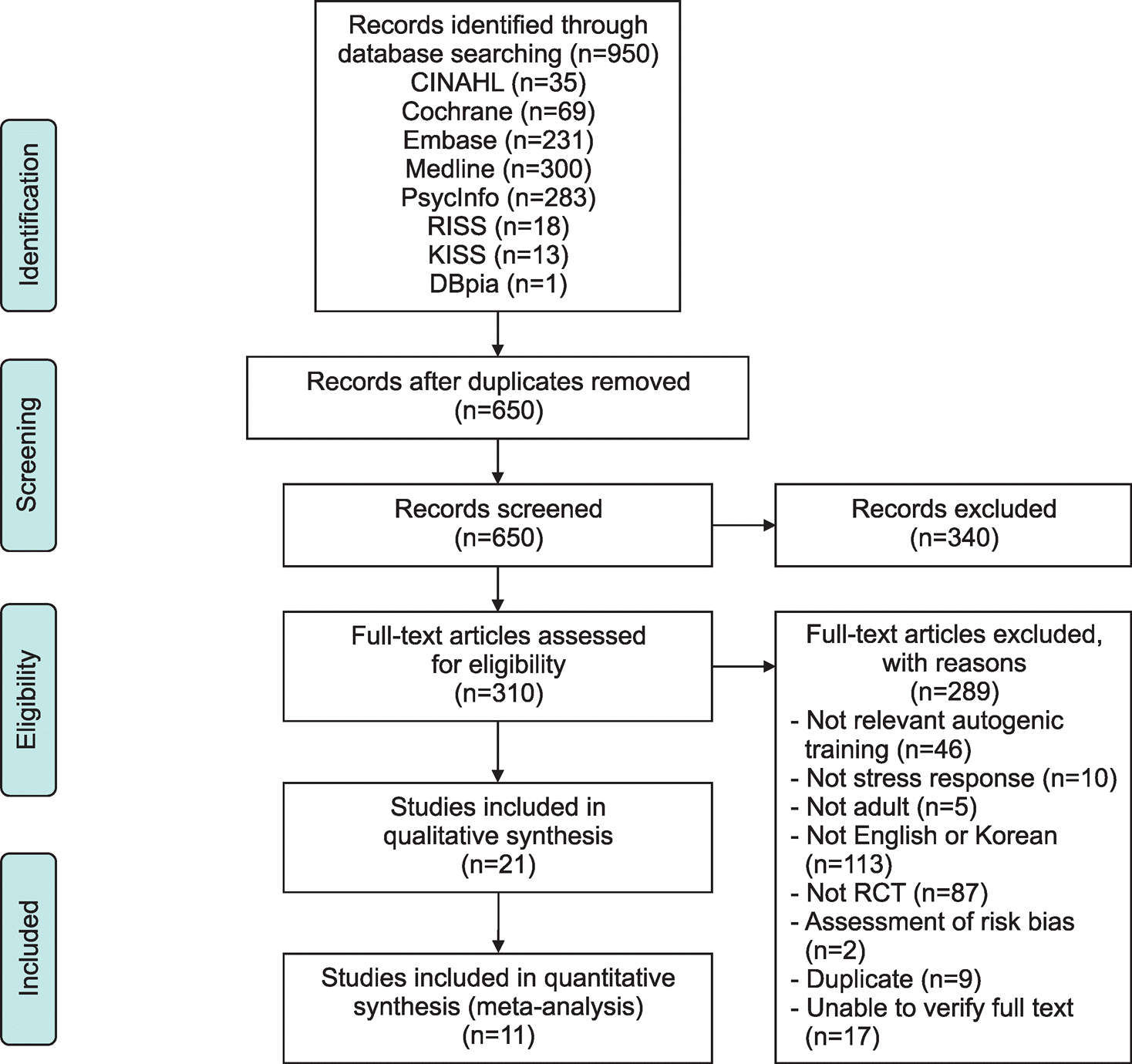
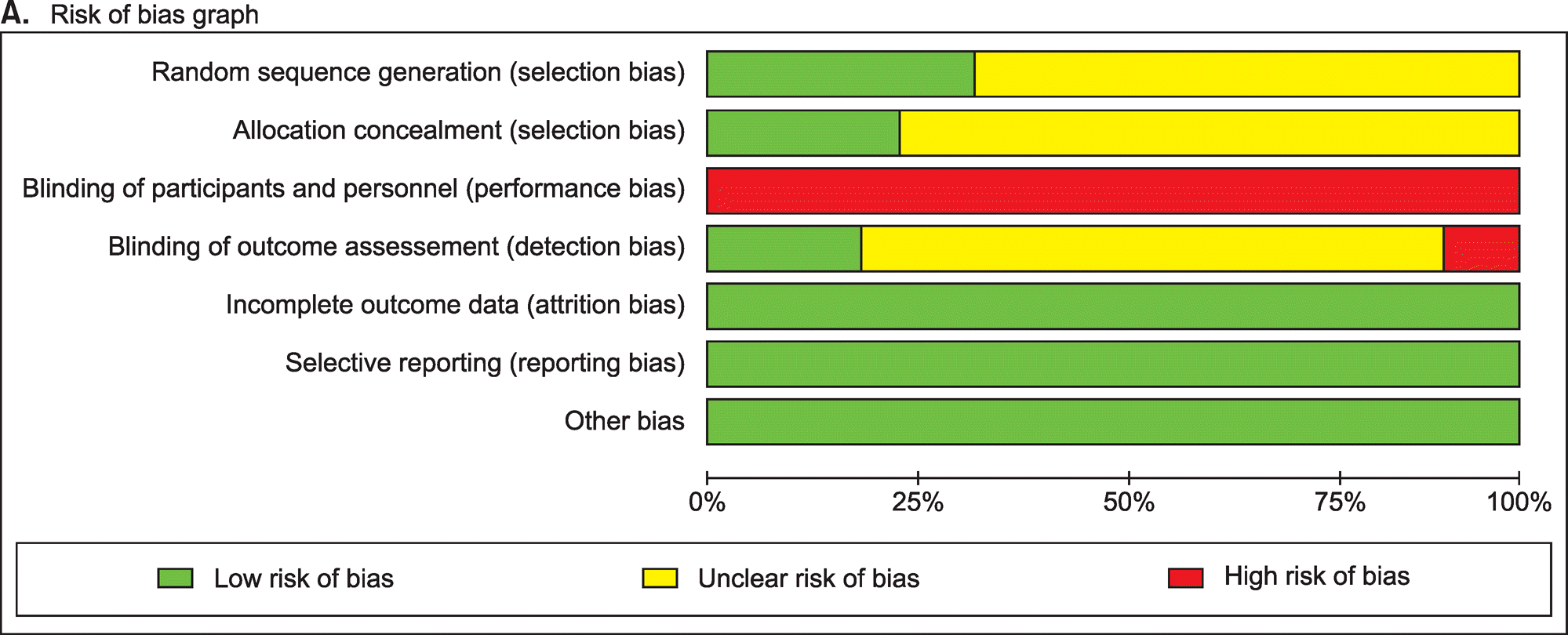
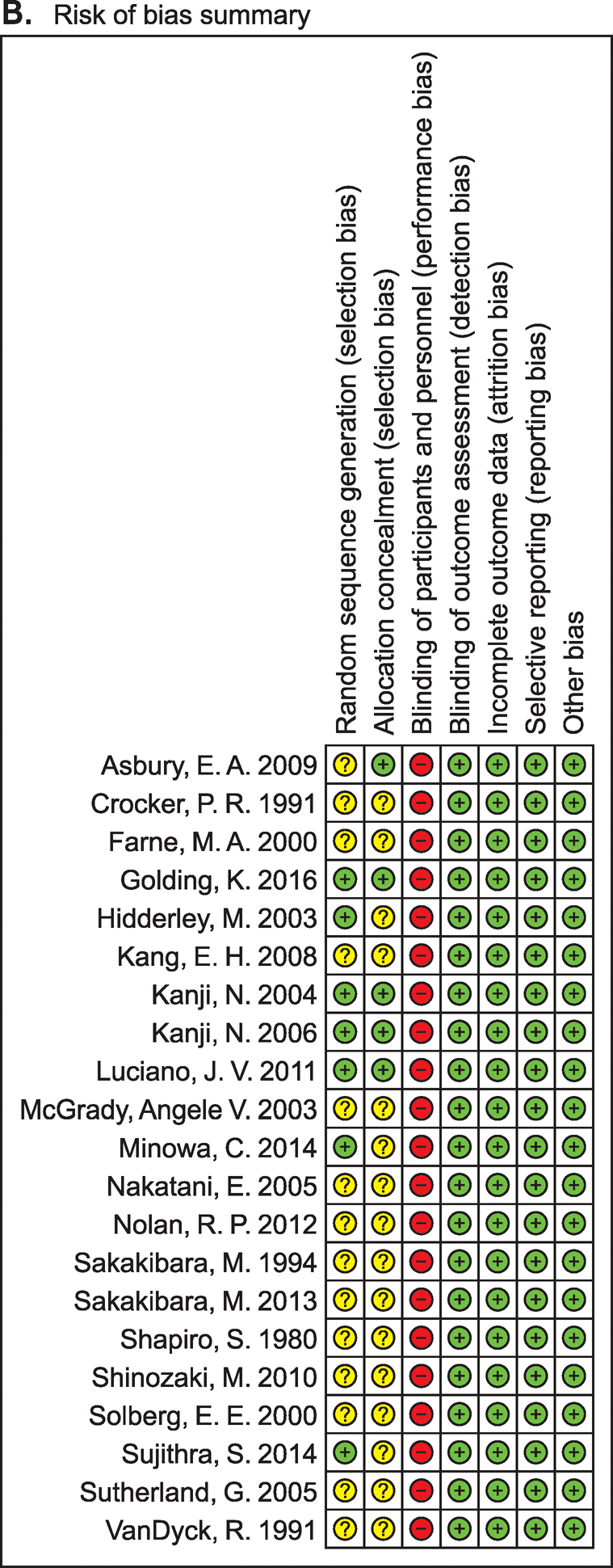
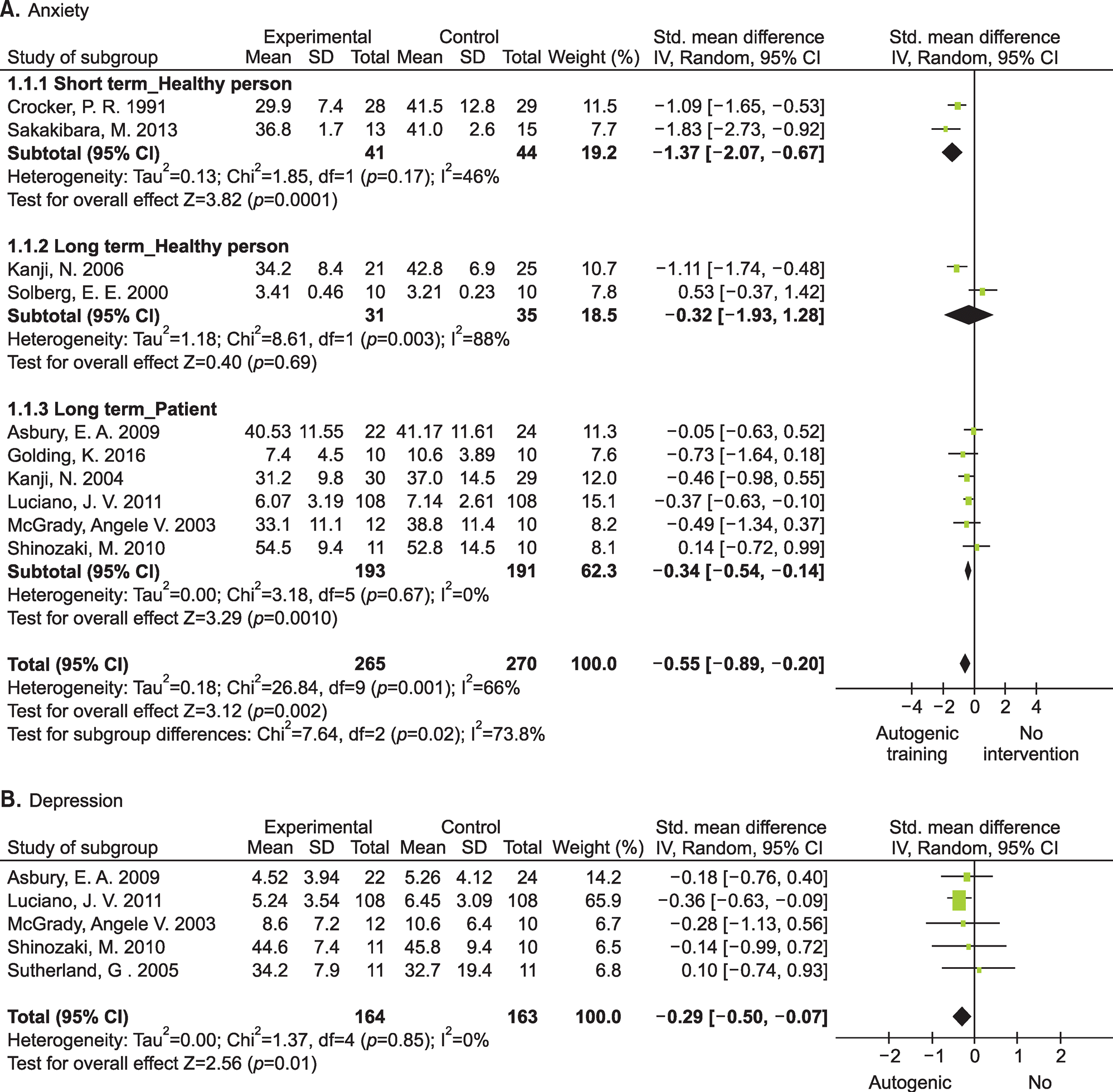
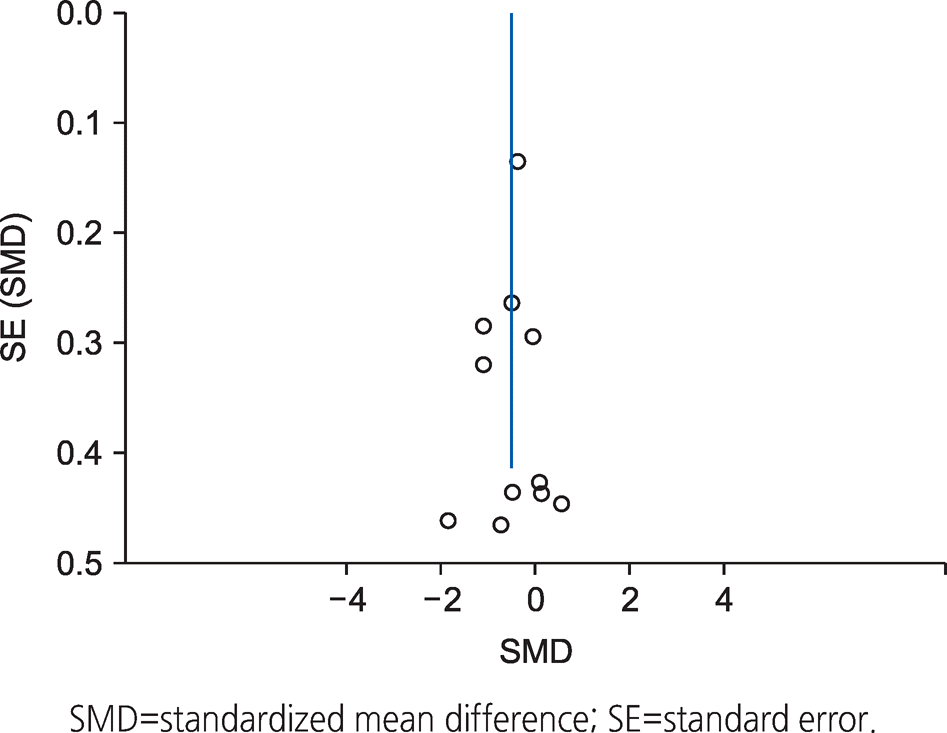
 XML Download
XML Download